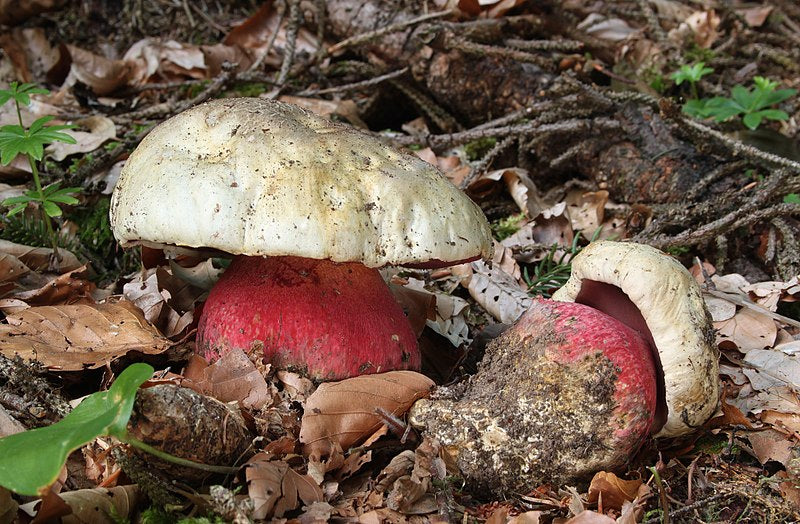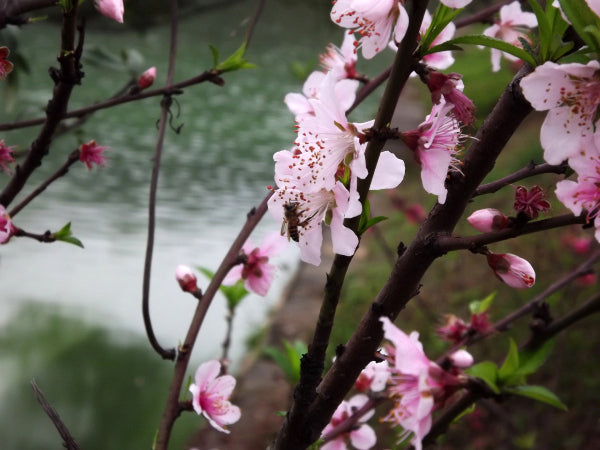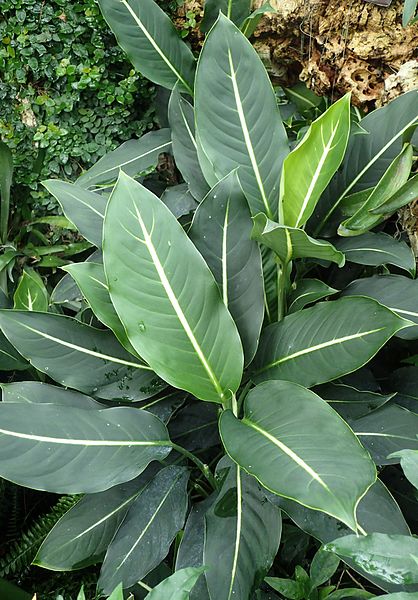
Wild Poisonous Plant Of The Week 12 -Satan's Bolete
Botanical name: rubroboletus satanas
Common name: Satan’s bolete, Devil’s bolete
Distribution: Found in broad leaved and mixed forest and woodlands. Common throughout the UK, particularly in the south of the country as it prefers warmer areas, within the temperate region. Mainly fruiting in Summer and Autumn.

Appearance: Fortunately, this is quite a distinguishable fungus. The cap can reach an enormous 30cm in span and sometimes can be anywhere up to 50cm in span. The mushroom starts out as being largely hemispherical with a margin, becoming convex with maturity. Younger specimens are generally a greyish white colour whilst older specimens become “brownish”. The cap often becomes smooth in maturity and has a glutinous consistency when wet.

One of the best identifiers of the Devil’s bolete is the colour of its “pores” which soon become a yellowish/ orange colour and then almost immediately become entirely purple or red on maturity. The bolete will bruise blue, even under light pressure. This is even more so the case in more mature specimens. Initially starting out with a mild fragrance, the Devil’s bolete gains pungency quickly ending up smelling like carrion. We are not sure who reported that younger specimens have a pleasant nutty taste…

Toxicity: Quite. There is still some debate as to the toxicity of this fungus. Reportedly, in certain parts of the world, this mushroom is considered fit for human consumption but this is supposedly based on misidentified samples. An alternative suggestion is that there is some variance in toxicity which relates to geographical location. Again, this is thought to be incorrect or at least unproven. If ingested, likely symptoms include severe abdominal/stomach pain, bloody diarrhoea and violent vomitting. These symptoms can last up to six hours. Fatalities are rare and usually associated with other influencing factors.,
Images courtesy of Wiki Creative Commons Attribution;
Bernypisa and Holger Krisp https://creativecommons.org/licenses/by-sa/3.0/deed.en
- Führer für Pilzfreunde : die am häufigsten vorkommenden essbaren, verdächtigen und giftigen Pilze / von Edmund Michael ; mit 68 Pilzgruppen, nach der Natur von A. Schmalfuss https://dx.doi.org/10.5962/bhl.title.3898


